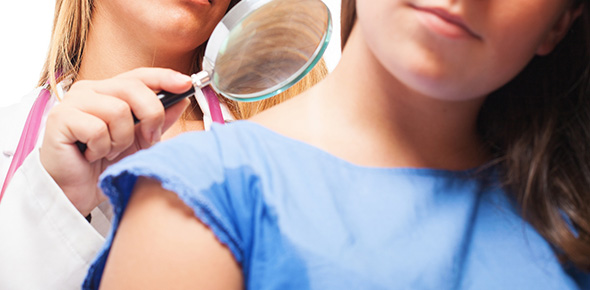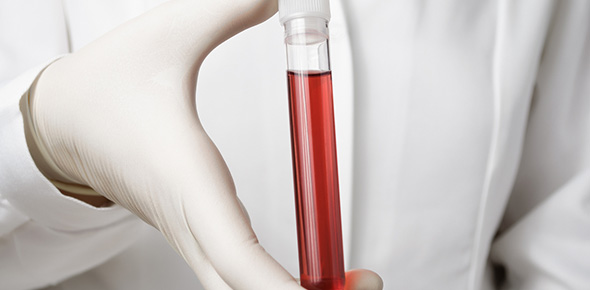Related Flashcards
Cards In This Set
| Front | Back |
|
The term "mouth" refers to what features?
|
- Mouth cavity
- Walls of mouth cavity
- Teeth
- Tongue
- Salivary Glands
|
|
Oral Fissure
|
Lips - entrance to the oral cavity
|
|
Palatoglossal Arches
|
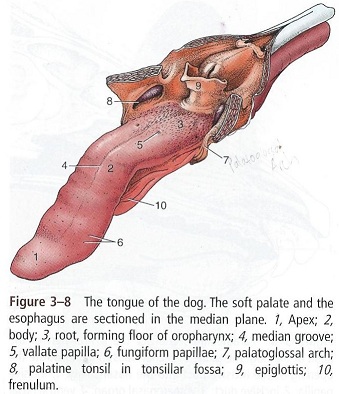 - A soft tissue fold, continuing from posterior edge of the soft palate to the base of tongue - Form the boundaries of the isthmus of fauces - #7 in image |
|
Isthmus of Fauces
|
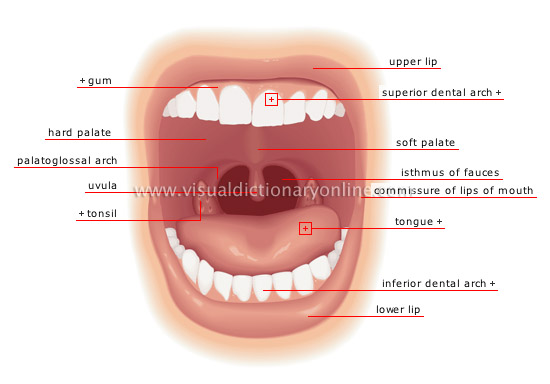 - The constricted aperture between the cavity of the mouth & the pharynx |
|
Hard Palate
|
- Roof of mouth
- Bony foundation w/ contributions from Incisive, Maxilla & Palatine bones
- Larger, rostral part of roof based on a body shelf formed of the palatine processes of the Incisive, Maxillary & Palatine bones
|
|
Buccinator Muscle
|
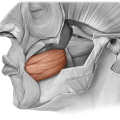 - Cheek Muscle (on the inside of the cheeks |
|
Vestibule of the Mouth
|
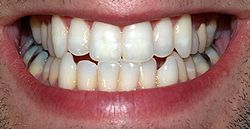 - Cleft-like space between the cheek & the dental arches - On a closed mouth, it is the tiny space bordered caudally by the teeth, rostrally by the lips & laterally by the cheeks - A "vestibule" is an antechamber; small entrance hall or passage btwn the outer door & the interior of a house/building |
|
Soft Palate
|
- Contains striated muscles which tense & raise the soft palate during swallowing
- The soft tissue constituting the back of the roof of the mouth
- Distinguished from the Hard Palate at the front of mouth in that it doesn't contain bone
|
|
Tongue
|
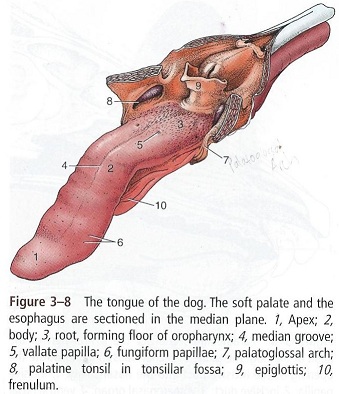 - Highly muscular organ that occupies the greater part of the oral cavity & extends into oropharynx - Consists of 3 parts: apex, body & root - Composed of striated muscle (of somatic origin) |
|
Apex of the Tongue
|
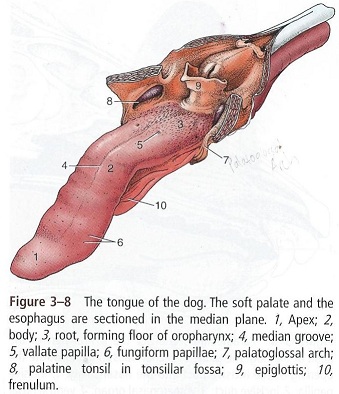 - The unattached part of the tongue - Is free to roam both w/in & beyond the mouth - Shape is dorsoventrally compressed (flat) |
|
Body of the Tongue
|
- The middle, attached part of the tongue located between the apex part & root part of tongue
- Attachment is to the symphysial region of the mandible
- Crosssection is like an upsidedown triangle (being joined to the oral floor by a mucosal fold or frenulum)
|
|
Root of the tongue
|
- Most caudal part of the tongue
- Attachment is to the hyoid bone
- Shape is uniformly wide (i.e. has a rectangular cross section
|
|
What are the 4 extrinsic muscles of the tongue?
|
1. Styloglossus muscle
2. Hyoglossus muscle
3. Genioglossus muscle
4. Geniohyoideus
|
|
What is the fxn of the extrinsic muscles of the tongue?
|
To move the entire tongue on various directions
|
|
Geniohyoideus Muscle
|
- Passes from the incisive part of the mandible to the body of hte hyoid bone
- Lies below the tongue rather than w/in it
- Able to draw the hyoid & thus the tongue forward
- #1 in figure
|




